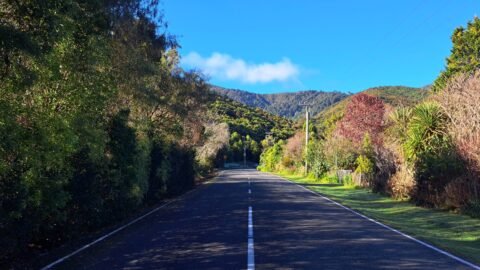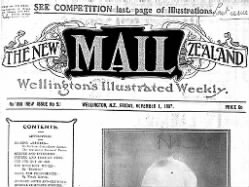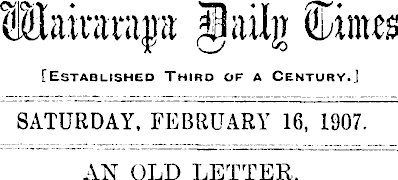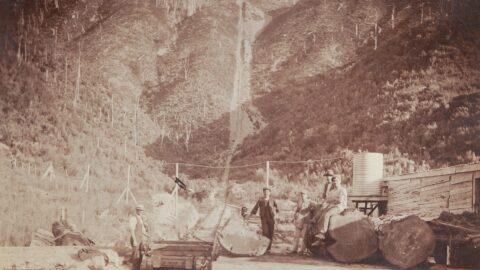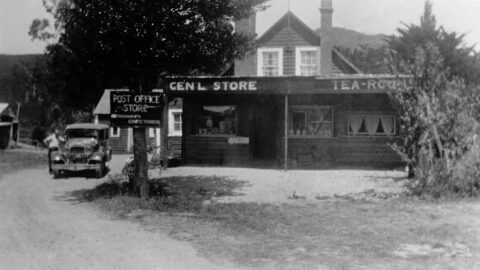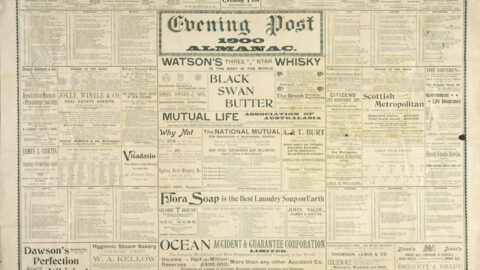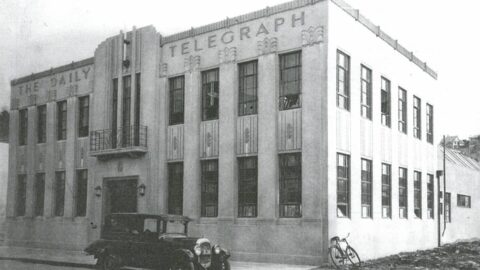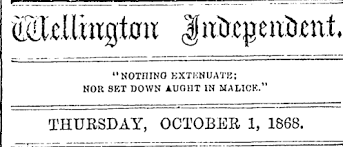Mr Clark in Search of a further water supply
Mr Clark, C.E., and the City Engineer, Mr Baird, returned last evening from their expedition in search of an extended water supply for this city. It will be remembered that the two gentlemen started on Friday afternoon on their expedition, and that Mr Baird returned on Saturday evening, making a fresh start yesterday morning, and rejoining Mr Clark at the Hutt.
Previous to going out the second time, Mr Baird made arrangements for hourly barometrical observations to be taken in town, in order that in testing by barometer the respective altitudes of the various streams visited, any possibility of error through barometric perturbations caused by atmospheric changes, might be eliminated. The wisdom of this precaution will appear in the sequel.
Messrs Clark and Baird, as we mentioned in a former issue, began their operations at the farthest point deemed practicable – the Pakuratahi River – and worked steadily backwards to town.
The Pakuratahi River.
The eminent suitability of the Pakuratahi River, in every respect but one, was accepted at once. There was an ample volume of water to supply a population of any magnitude to the end of time, and the water was found to be of the purest quality, while the elevation was sufficient for all purposes. The only single drawback was its excessive distance from town, which Mr Clark considered would involve so very heavy an expense as to place it practically outside the list of sources available for the present. No doubt at some future date, when the present population may have increased tenfold, this outlay will be undertaken readily, and will not be felt too heavy a burden, as with the present or even a largely augmented population it would be.
Akatarawa Stream.
The next stream visited was the Akatarawa, a tributary of the Hutt River, in fact the largest confluent of the latter, supplying nearly half its whole volume. It flows from the direction of Waikanae towards the Hutt, and enters that river about twenty miles from town. Our readers may remember it was strongly recommended in our columns by Mr Cruickshank. This stream also was found all that could be desired in respect to volume and quality, its distance from town moreover being little more than half that of the Pakuratahi. Unfortunately, however, a careful test of its elevation proved this to be insufficient to give the amount of fall requisite to bring the water into Wellington by gravitation at the necessary pressure.
Mungaroa River.
The Mungaroa River was the next examined, Messrs Clark and Baird ascending both branches for some miles through the bush. They found that while the volume of water was ample and its quality fair, although inferior to that of the streams previously examined, it was impossible to obtain within any reasonable distance of town the degree of elevation required for the purpose sought.
Belmont Stream.
The Belmont Stream was found to be of the purest possible quality and of good volume, while its comparative proximity to town was very much in its favor, but at no point within practicable reach could an altitude be obtained sufficient to fulfill the hydraulic requirements of a supply.
Hutt River.
The Hutt River, while of course ample in quantity and excellent in quality, was found on very slight examination to be unsuitable for the purpose, as at no point within 30 or 40 miles of town could sufficient elevation be secured.
Korokoro Stream.
The last point visited was the Korokoro stream, which flows into the harbor near Petoni. Messrs Clark and Baird followed the course of this stream upwards for several miles, through very rough country and bush. The result of a careful examination was that Mr Clark estimated the volume of the stream, even at the present dry season, and after a protracted drought, to be fully 2,000,000 gallons per diem, and its available altitude, at a distance of between two or three miles from its debouchement into the bay, to be 350ft by barometer, subject to correction by barometric fluctuations. The quality of the water also was found to be excellent.
Hence the practical effect was that a supply, yielding two millions of gallons daily, could be obtained at a distance of about nine miles from the centre of the city, at an elevation which, on allowing for barometric corrections, has been found to be about 270ft., the great fluctuation of the mercury yesterday having made a difference of nearly 80ft in the apparent height, which, but for the wise precaution alluded to above as having been taken by the engineers, would have passed undetected. This height, however, is considered practically sufficient to bring the water into town by gravitation, making due allowance for friction. It would be conveyed in iron pipes, first along the valley of the stream itself so far as the railway, and then along the line of the latter into town.
So far, therefore, the prospect of obtaining an additional supply at reasonable cost appears to be a favourable one.
Further explorations. Messrs Clark and Baird purpose, if the weather permit, starting again to-morrow to make a careful examination of the streams in the neighborhood of the present reservoir, or within a moderate distance, with the view to ascertain whether a supply might not be obtainable by tunneling through to the large reservoir from some of the streams to the westward of Wellington. If this could be done at less expense than that of bringing the water from the Korokoro in iron pipes, provided the volume were equally ample and the quality as good, this alternative would be in many respects preferable.
In conclusion we have to express our acknowledgements to Mr Clark and Mr Baird for the full and courteous explanations with which they have favored us.
Tags: Newspaper Waterworks
